A military doctor was killed by an explosive device in the vast Gourma region of Mali near the border with Burkina Faso, the French military said.
At around 11 a.m. local time (GMT) on Tuesday, April 2, an Operation Barkhane armored vehicle operating as part of a group was struck by an explosive device, the General Staff of the Armed Forces said in a release.
President Emmanuel Macron said in statement that the armored vehicle was struck by an “improvised explosive device” during an operation against “armed terrorist groups.”
A medical team immediately intervened while the Barkhane force “secured the area of action with ground-based units, supported by a Tigre helicopter, without detecting an enemy,” the French armed forces release said. Shortly afterwards, two injured soldiers were evacuated using an NH 90 Caiman helicopter to the French military surgical unit in Gossi, where the most seriously wounded soldier died as a result of his injuries.
Minister of the Armed Forces Florence Parly said in a statement that Doctor Captain Marc Laycuras had “died for France.” She said the other injured soldier was “not in danger” and wished them a speedy recovery.
Laycuras, 30, served with the 120th medical unit in Le Mans, and deployed to Operation Barkhane in Mali in February. He became the the 25th member of the French military to die since France intervened in Mali in 2013, and the first since October 2014.
Laycuras’s death comes a week after France’s armed forces chief General Francois Lecointre said jihadist forces in Mali were on the back foot, although he stressed that the enemy had not yet been defeated and that the fight to restore peace in the Sahel would be long.
Macron expressed his “very great sadness” at the news of the doctor’s death, and reiterated his “full confidence in the French soldiers engaged in the Sahel” and France’s “full support for Mali and the United Nations forces in implementing the peace accord” reached in 2015 with some armed groups.
French armed forces spokesperson Patrik Steiger told AFP that the incident occurred near the border with Burkina Faso. The Menastream risk consultancy tweeted that the it was in the Foulséré area of the Mopti Region, around 135 km Gossi, which is around 150 km west of Gao where the Barkhane force is based.
The French Armed Forces said the Barkhane force has mainly been operating in the Liptako region since November 2017, but at the beginning of this year it expanded into the Gourma, establishing a forward operational base and conducting operations with the armed Forces of Mali and Burkina Faso.
The new base around 5 km from Gossi was formerly used by the Armed forces of Mali and the United Nations and will host several hundred soldiers, Nord Sud Journal reported. Lieutenant-Colonel Sabatié, a communications advisor for Operation Barkhane, told Studio Tamani “it is a temporary operational base, which will make it possible to fight against terrorism in the sector.”
“Liptako is on the Malo-Nigerien border, and Gourma is on the Malo-Burkinabe border and these border areas are obviously the most sought-after places by terrorists to carry out their actions.… the Gourma region for us presents all the conditions necessary to be effective,” General Frederic Blachon, the Barkhane Force Commander said, Africa News reported.

Operation Barkhane
The recent unrest in the Sahel began in Mali in 2012 with Tuareg separatist uprising against the state, which was exploited by Islamist extremists linked to al-Qaeda who took key cities in the desert north.
France began its Operation Serval military intervention in its former colony early the next year, driving the jihadists from the towns, but the militant groups morphed into more nimble formations operating in rural areas, sometimes winning over local populations by providing basic services and protection from bandits.
The insurgency has gradually spread to central and southern regions of Mali, and across the borders into neighboring Burkina Faso and Niger. Large swathes of Mali remain outside government control, despite a 2015 peace accord designed to isolate the militant Islamists.
The French mission evolved in August 2014 into the current Operation Barkhane, which has 4,500 troops personnel deployed with a mandate for counter-terrorism operations across the Sahel region, with 2,700 soldiers in Mali to support poorly-equipped local military forces.
Three U.K. Royal Air Force Chinook heavy lift helicopters based in Gao have since August 2018 supported French troops in Mali, and 50 Estonian soldiers are deployed in Gao in a force-protection capacity. In February, Denmark’s government announced plans to send two transport helicopters and around 70 soldiers to support Operation Barkhane at the end of 2019.
Troops deployed to Barkhane work alongside other international operations, including the U.N. Minusma stabilization mission in Mali, which began in 2013 and has about 12,000 troops and 1,750 police deployed, as well as the regional G5 Sahel joint counter-terrorism force that aims to train and deploy up to 5,000 personnel.
Jihadists losing grip in Mali but peace will take time, French armed forces chief says
With reporting from AFP



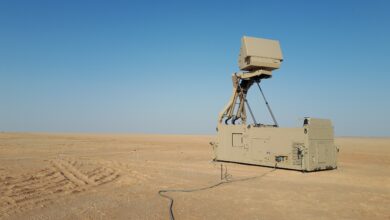
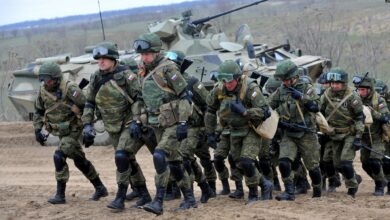

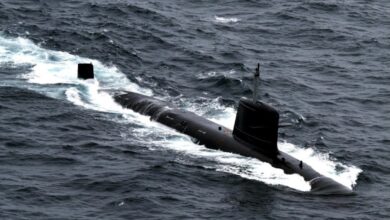
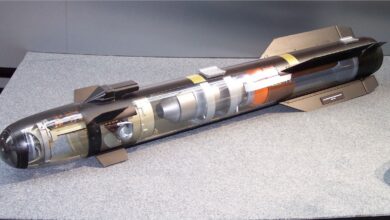

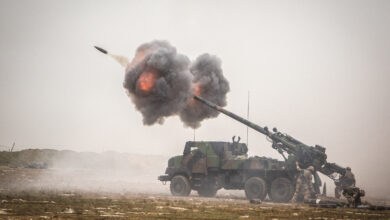
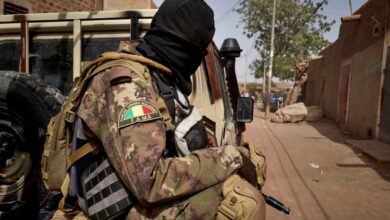
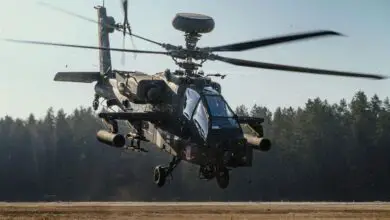
3 Comments